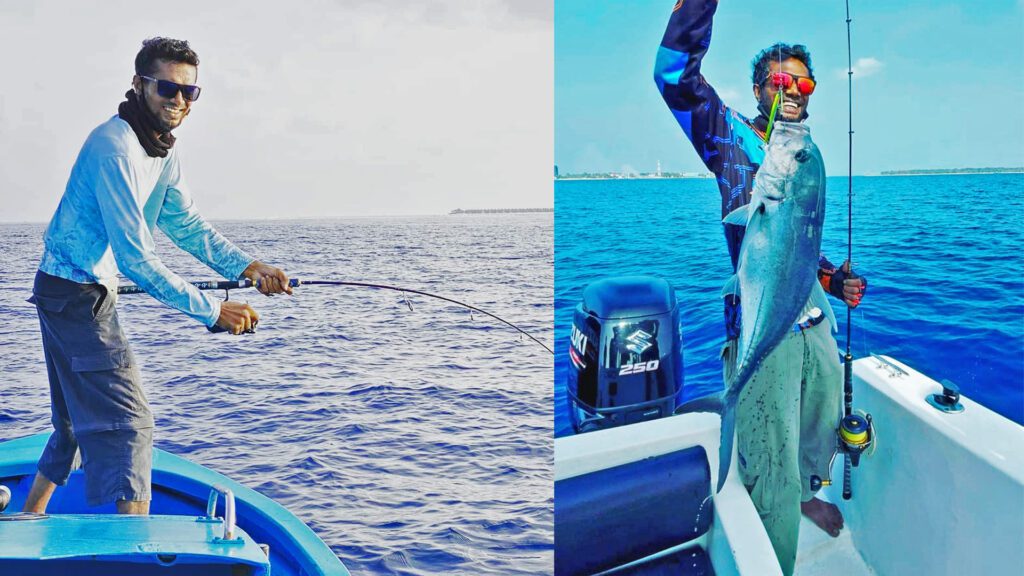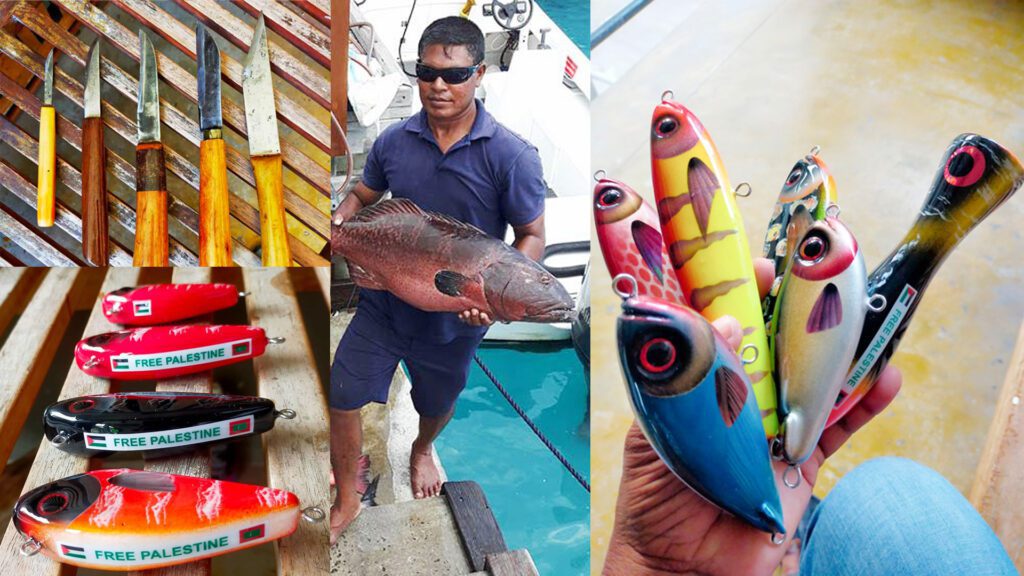
This is a very effective technique to target pelagic fish. While reeling and jerking, the sudden strike of a predator is a thrilling adventure. This method of jigging involves quick jerking of the rod to present a fast up-and-down motion of the jig. It is believed to have originated in Polynesia. This technique was renewed and developed in 1990 by Japanese anglers. The jigs are presented at areas where fish are located.
High-speed jigging is the most prolific technique for large fish. In this technique, the lure can be presented in the killing zone for a considerable amount of time. The initial action of the method is to drop the lure to the bottom. You have to lift the lure quickly to prevent entangling it in the corals. During the retrieval, the lure is not normally taken to the surface. After 10 to 30 turns, the lure is again dropped.
The rod is wedged under the arm or rested on a belt. The action starts- pull the rod up and, at the same time, make a reel turn. This is a synchronized action. A jerking jig moving upwards, enticing the action of a fleeing or wounded fish. The metal jig is retrieved with a rhythmic motion that creates a vertical walk-the-dog action. This is an effective technique to target fish living at the bottom. And this is highly effective where there are schools of bait. The important thing here is the retrieval speed. This technique is effective in deeper waters.
This is a physically demanding technique that requires a lot of energy and strength. The secret is to “bomb” the area where the fish lives – drop the lure where the fish are located. Normally fish follow the lure moving through the water. However, they often strike the lure when it sinks.
In this technique, a shorter and more flexible rod is used. Normally rods between 5’2 and 6’0 are used. But this depends on the weight of the rod, lure weight, the action of the rod, and the load that it handles, and harmony between rod and reel weight. The reel should be strong. Reel drag is adjusted to the strength of the rod. If you use 50lb braid, then the drag will be set at 15lb and the rod should bear at least 15lb of load.
Spinning reels are normally used in this technique. Conventional reels are also used. But have a slower reel speed. The most suitable models are the PG models. The braided line that is thin in diameter is used. Good leaders and assisted hooks should be used.
When selecting jigs, you can use rear balance, purer and more traditional jigging, and center balance, a little more technical and with more elaborate movements ranging from acceleration and sliding. Jig action is determined by the cross-section of the jig, as well as the action imparted by the rod.
The jigs are normally long and slender. This can help get the jigs to the bottom quickly. The jigs are also painted with flashy colors to reflect light and attract fish in the deepest, darkest parts of the ocean.
Normally jigs between 100g to 300g are used. Normally “Center weight” or “tail weight” jigs are used. On “center weight”, the weight is balanced around the center of the jig. On the “tail weight,” they are placed towards the tail. Normally for midwater (30-70m) fish, a center-weight jig is mainly used. It’s a slow descent with sideways movements. The “tail weight” jig is balanced with a weight near the tail. This jig is designed to reach the bottom quickly and lift with less action.
If fish are active, with the right technique and presentation can reward you. “If the fish are active, I will catch more on a jig than on bait – way more,” says Ben Secrets of Accurate Fishing Products, in Los Angeles, a speed jigging expert (Law, 2019).
The perfect presentation of this technique is due to a combination of equipment – well-designed lures, parabolic rods, reels with high retrieve rates and heavy drags, and no-stretch braided lines.
Speed jigging is effective in areas where wrecks, reefs and rock piles are located. The targeted fish can be: rockfish, yellowtail and yellowfin tuna, stripers and yellowfin, grouper, king mackerel and wahoo, snapper.




